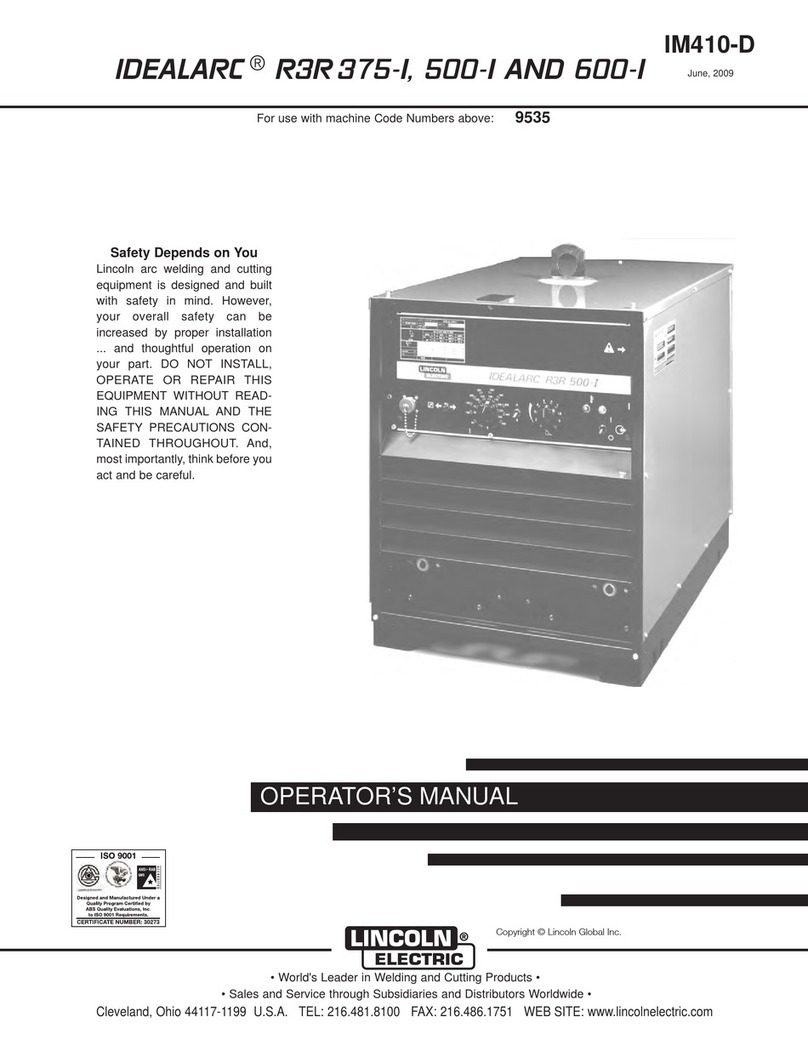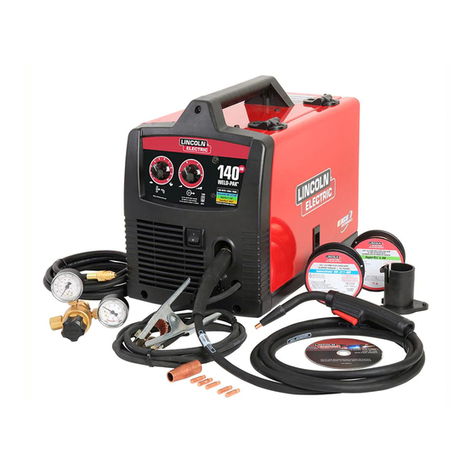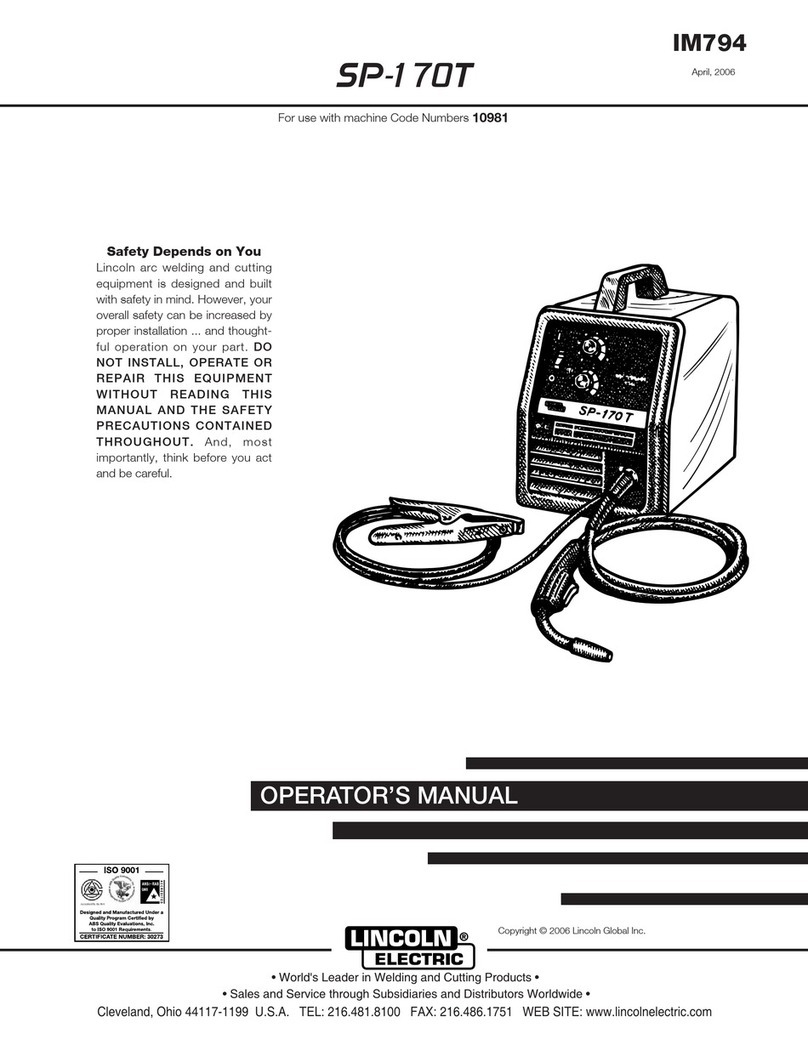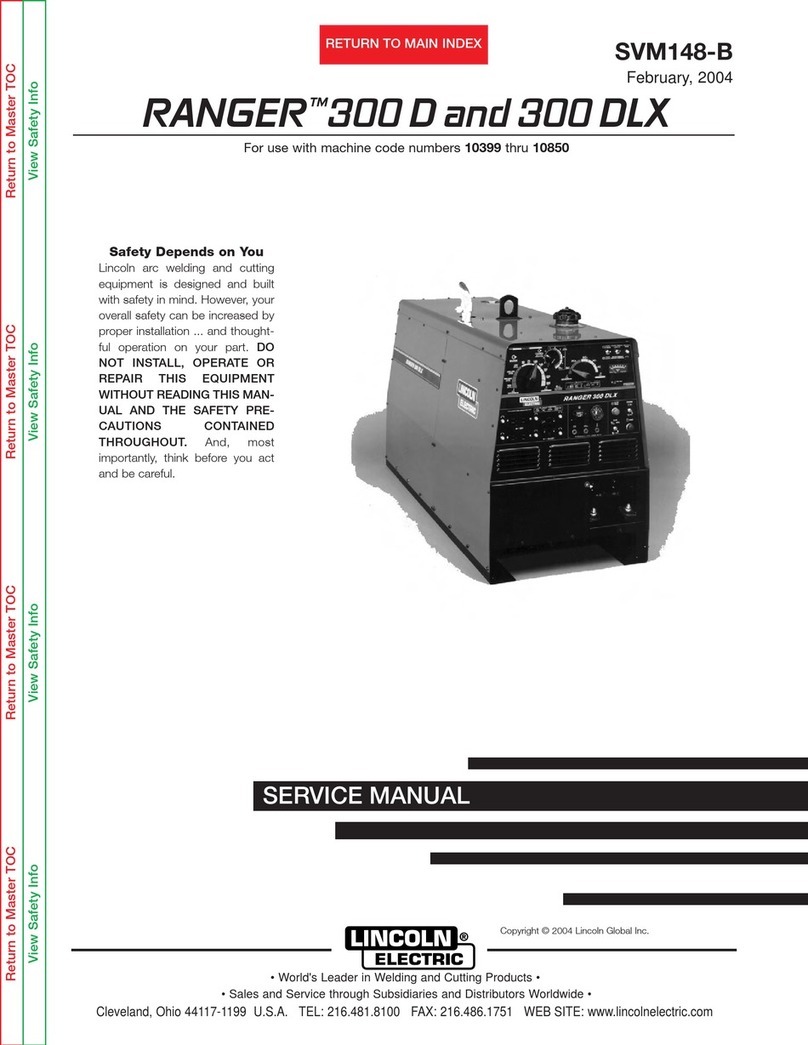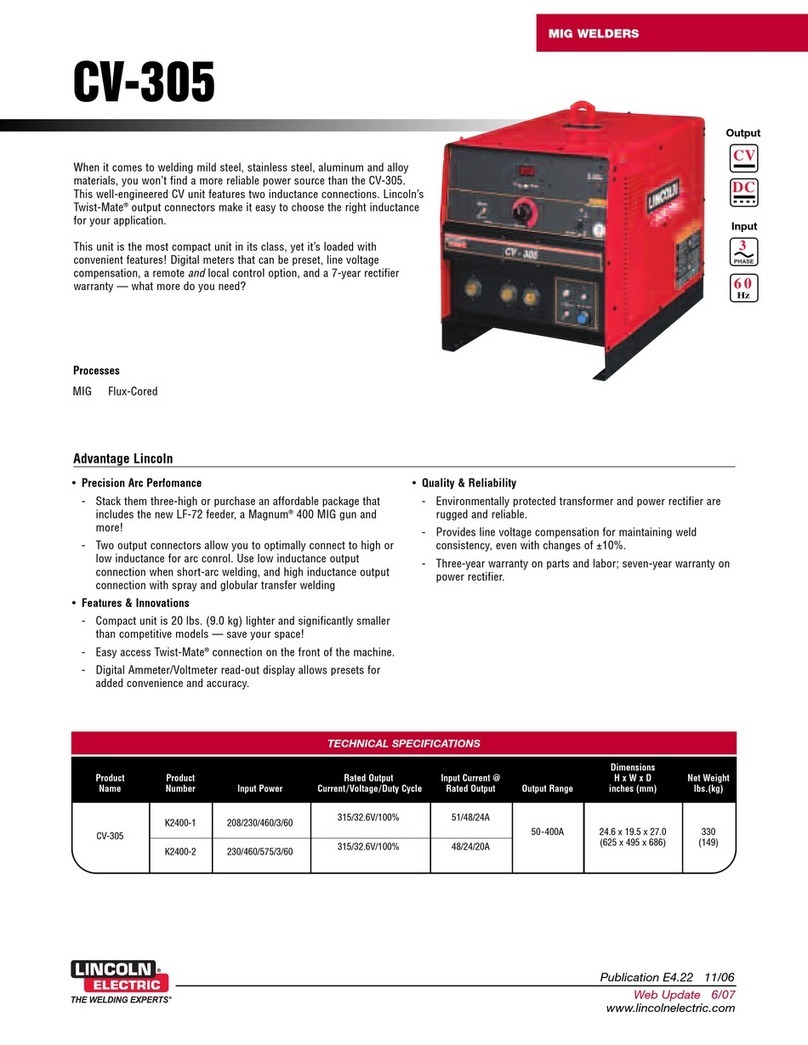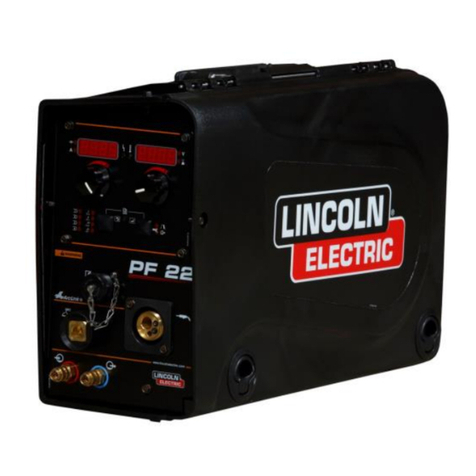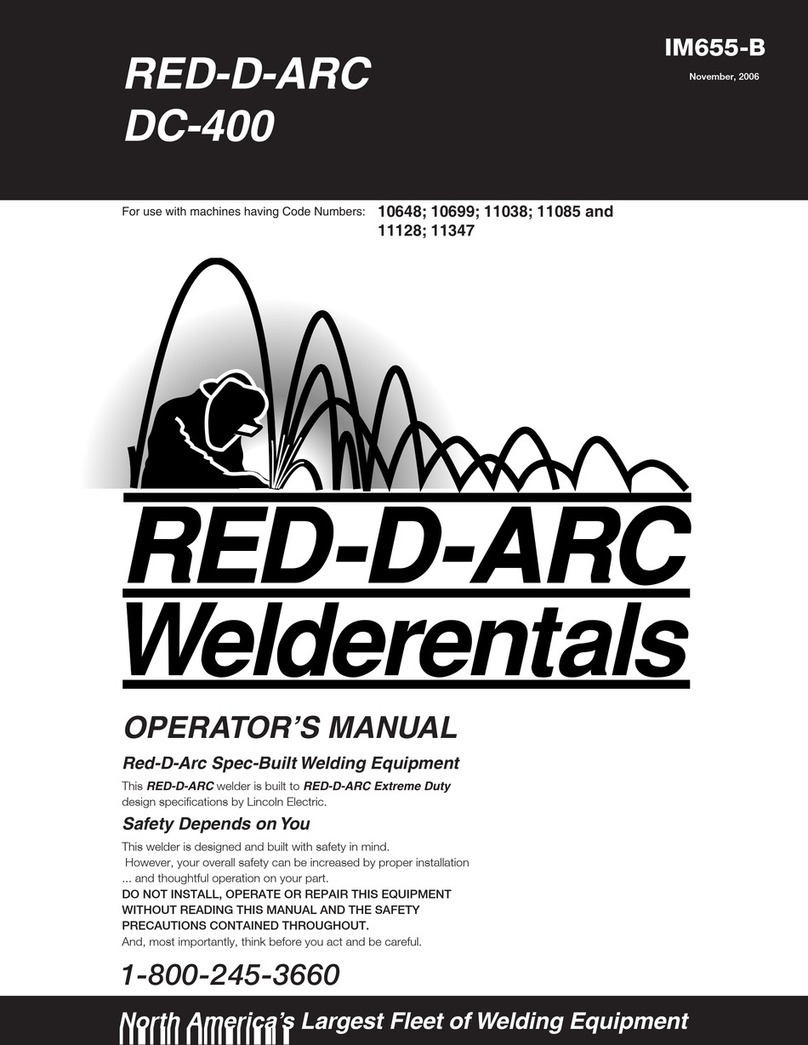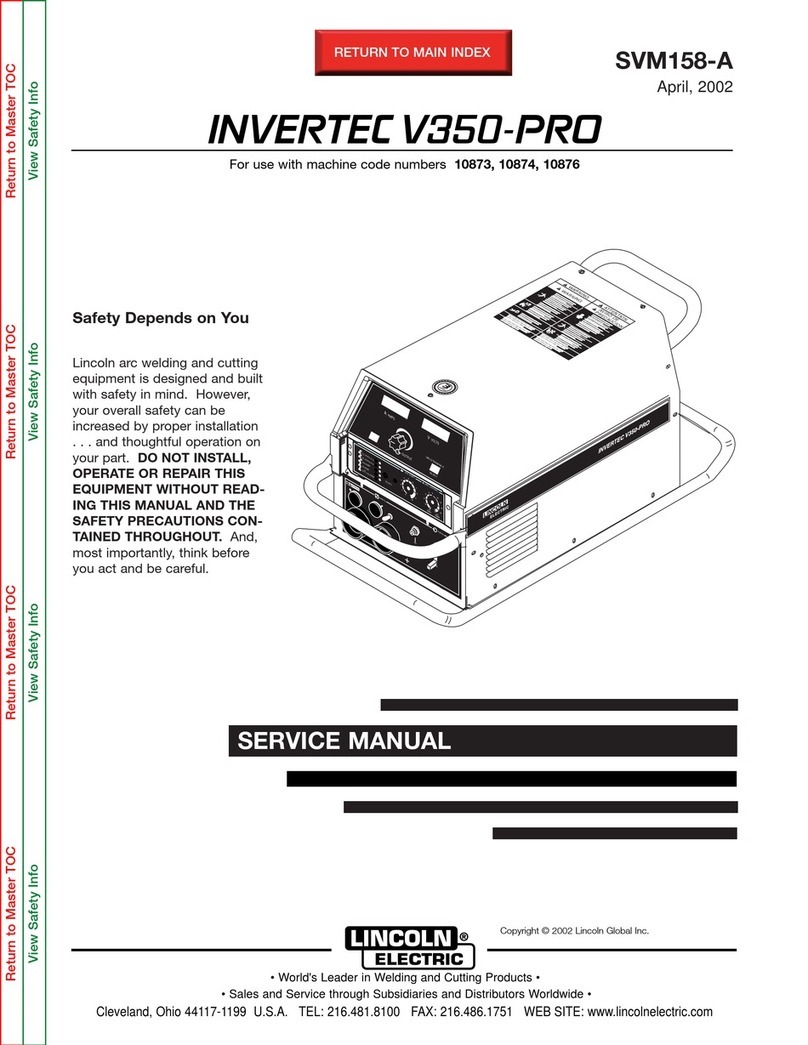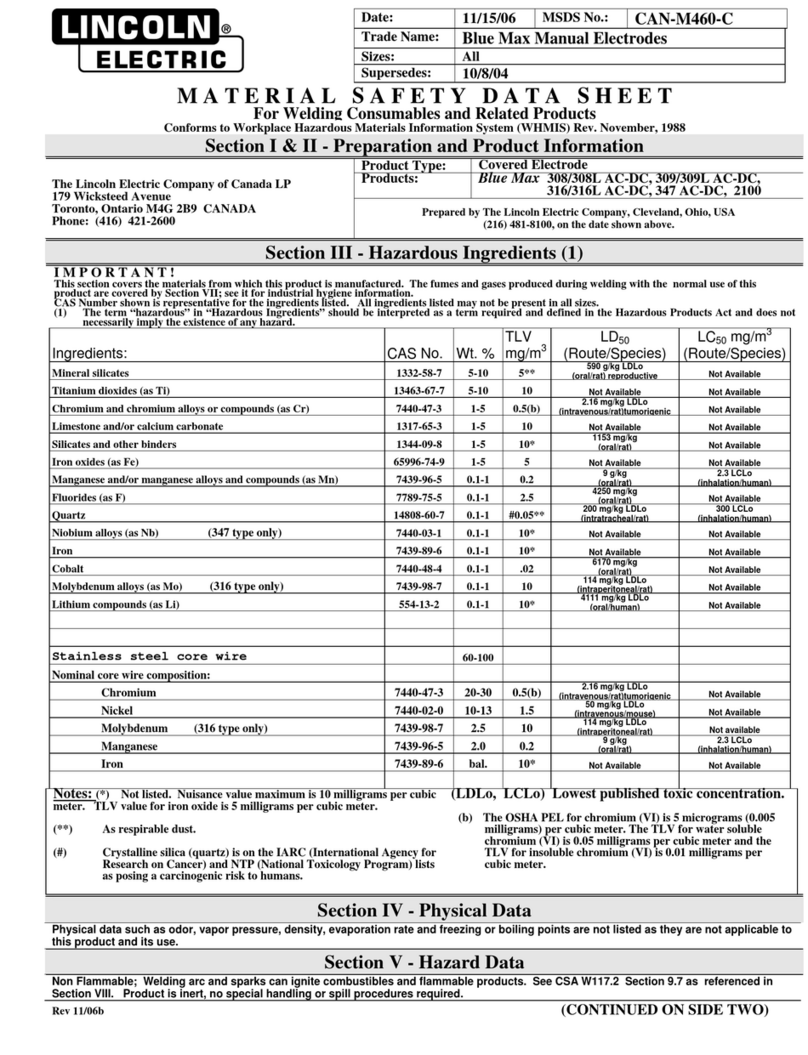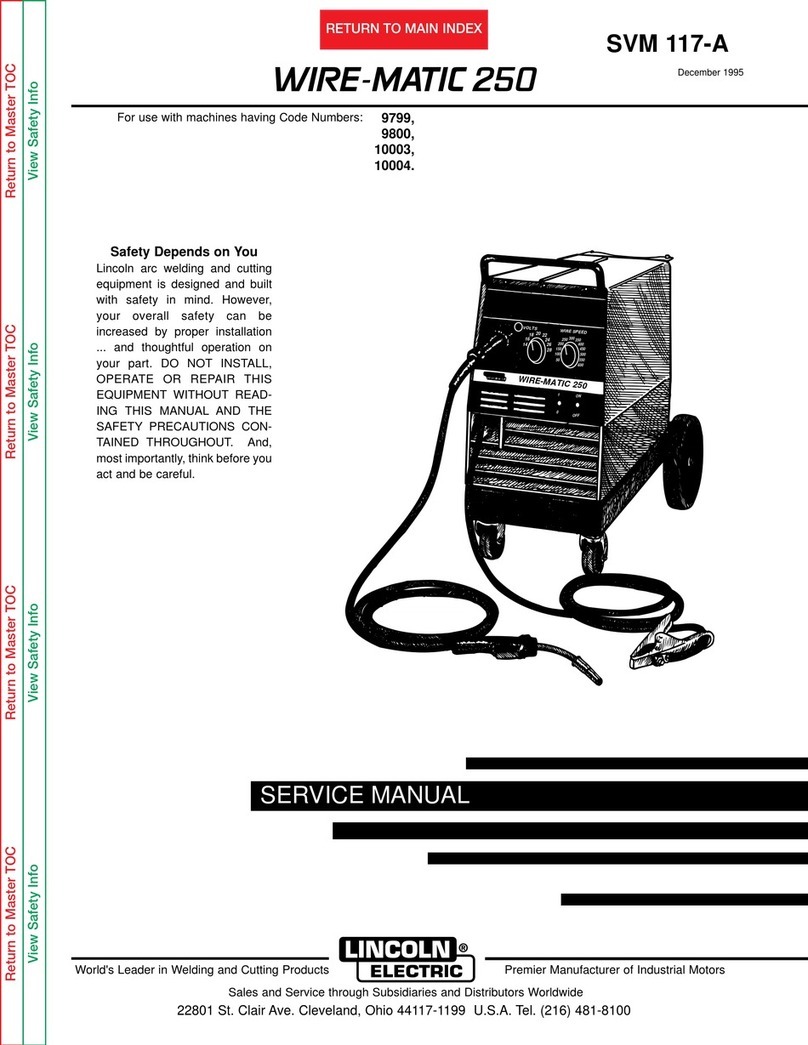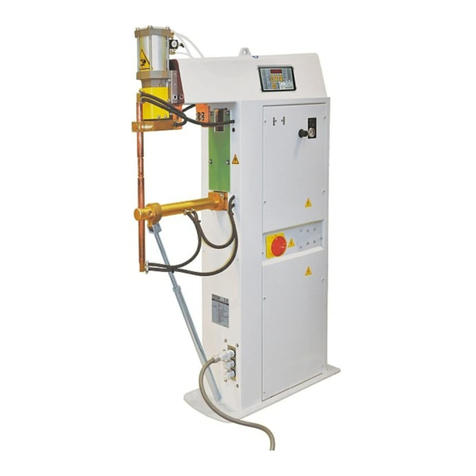-3
1. Power Switch ON/OFF (O/I): It controls the
machine power input. Be sure the power source is
connected to the mains supply before turning power
on ("I").
2. Power Indicator Light: It indicates that the power is
on.
3. Thermal Indicator Light: It indicates that the
machine is overloaded or that the cooling is not
sufficient.
4. Low Inductance Negative Output Socket: The low
inductance connection is typically used for short arc
welding of mild steel, particularly on thin materials or
when using CO2shielding gas.
5. High Inductance Negative Output Socket: The high
inductance connection is more suitable for short arc
welding in heavier work or when using 75% Argon /
25% CO2shielding gas. The connection produces a
softer arc and a flatter bead with more wash-in than
the low inductance connection. Spray type transfer
is possible with either connection.
6. Wire Feeder Receptacle: 14-pins receptacle for
wire feeder. Provides connections for auxiliary
power of wire feeder.
7. Wire Feeder Voltmeter Switch: This switch selects
the polarity of the wire feeder voltmeter, if so
equipped. When the welding torch is positive (MIG,
Outershield and some Innershield processes), set
the switch to "+". When the welding torch is
negative (most Innershield applications), set the
switch to "-".
8. Positive Output Socket: Allows the connection, with
the power cable, to the wire feeder.
9. Covered Hole: For CO2gas heater socket (see
accessories, K14009-1 CO2Socket Kit).
10. Fuse: This fuse protects the wire feeder supply
circuit (see Spare Parts).
11. Power Input Cable: Connect the proper plug to the
input cable then into the rated output according to
appropriate rules. Only qualified personnel shall
connect this plug.
WARNING
Read and understand the cooler manual before
connecting it to the machine.
Welding Cables Connections
Insert the plug of the work cable into the socket [4] or [5].
The other end of this cable connects to the work piece
with the work clamp.
Connect the wire feeder LINC FEED 33 to the power
source:
•insert the positive welding cable into the output
socket [8].
•insert the wire feeder control cable into the
socket [6] (see Accessories, Source/wire feeder
cable K10347-PG-xM or K10347-PGW-xM).
Use the shortest possible cable lengths.
Machine and Circuit Protection
The CV420 / CV505 is protected against overheating,
overload and accidental short-circuits.
If the machine is overheated, the thermal protection
circuit will decrease the output current to 0. The thermal
protection indicator [3] will turn on. The thermal
protection circuit will turn on the output current again,
when the machine is cooled.
The CV420 / CV505 is also electronically protected
against overload and accidental short-circuit. The
overload and short-circuit protection circuit automatically
reduces the output current to a safe value when it
detects an overload.
Maintenance
WARNING
For any maintenance or repair operations it is
recommended to contact the nearest Technical Service
Center or Lincoln Electric. Maintenance or repairs
performed by unauthorized service centers or personnel
will null and void the manufacturer's warranty.
The frequency of the maintenance operations may vary
in accordance with the working environment where the
machine is placed.
Any noticeable damage should be reported immediately.
Routine maintenance (everyday)
•Check cables and connections integrity. Replace, if
necessary.
•Remove the spatters from the welding gun nozzle.
Spatters could interfere with the shielding gas flow
to the arc.
•Check the welding gun condition: replace it, if
necessary.
•Check condition and operation of the cooling fan.
Keep clean its airflow slots.
Periodic maintenance (every 200 working hours
but at list once every year)
Perform the routine maintenance and, in addition:
•Keep the machine clean. Using a dry (and low
